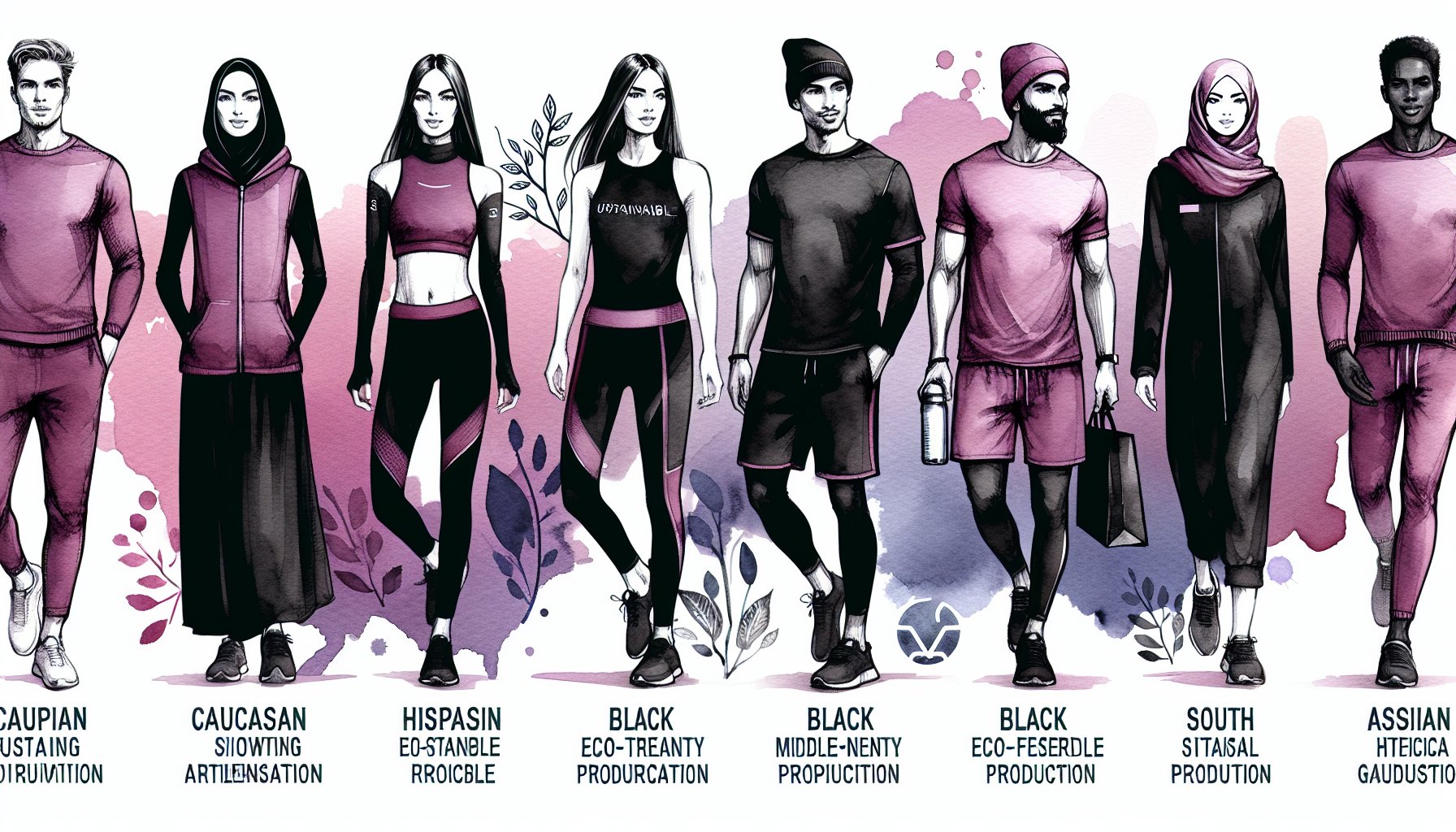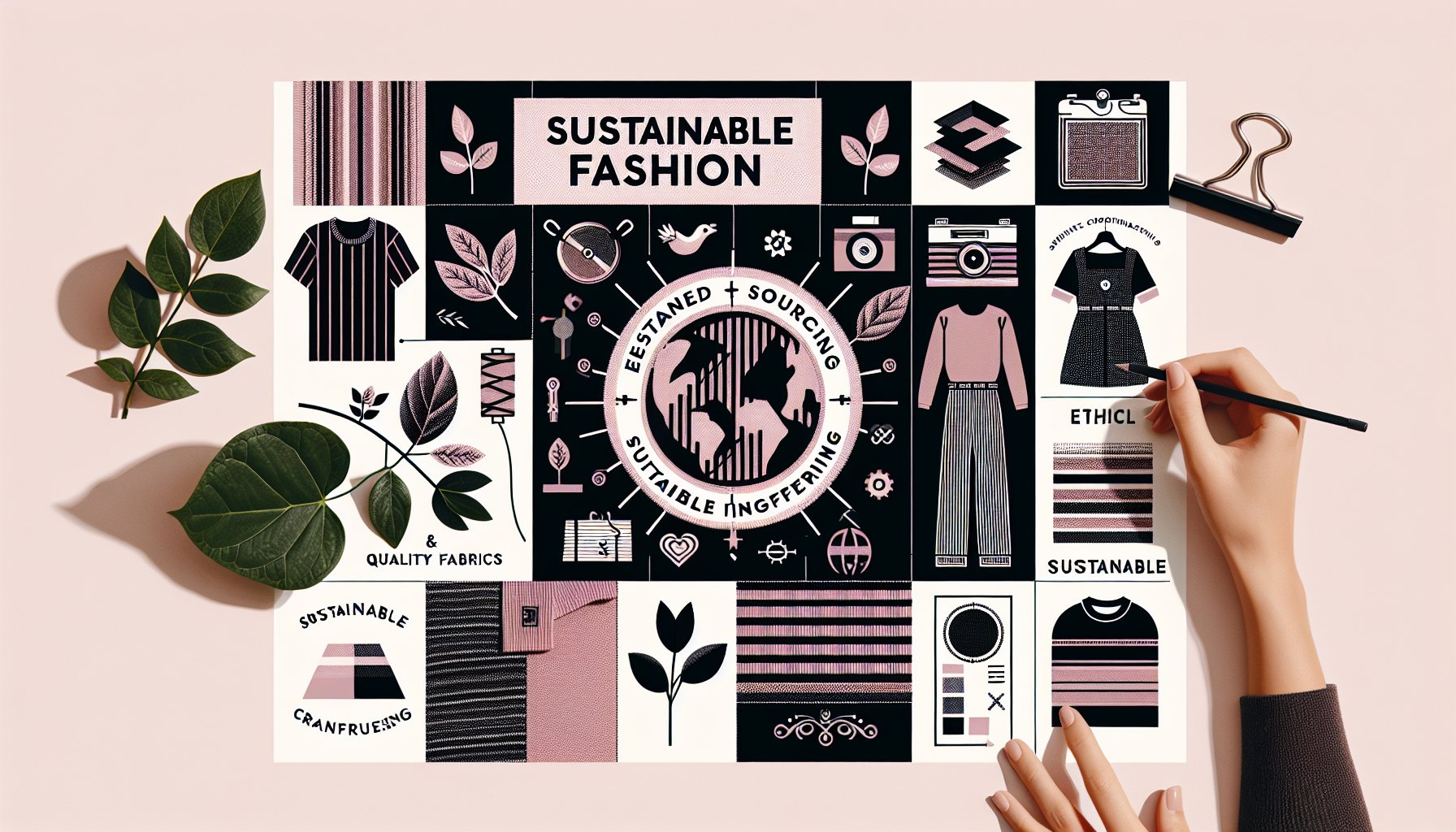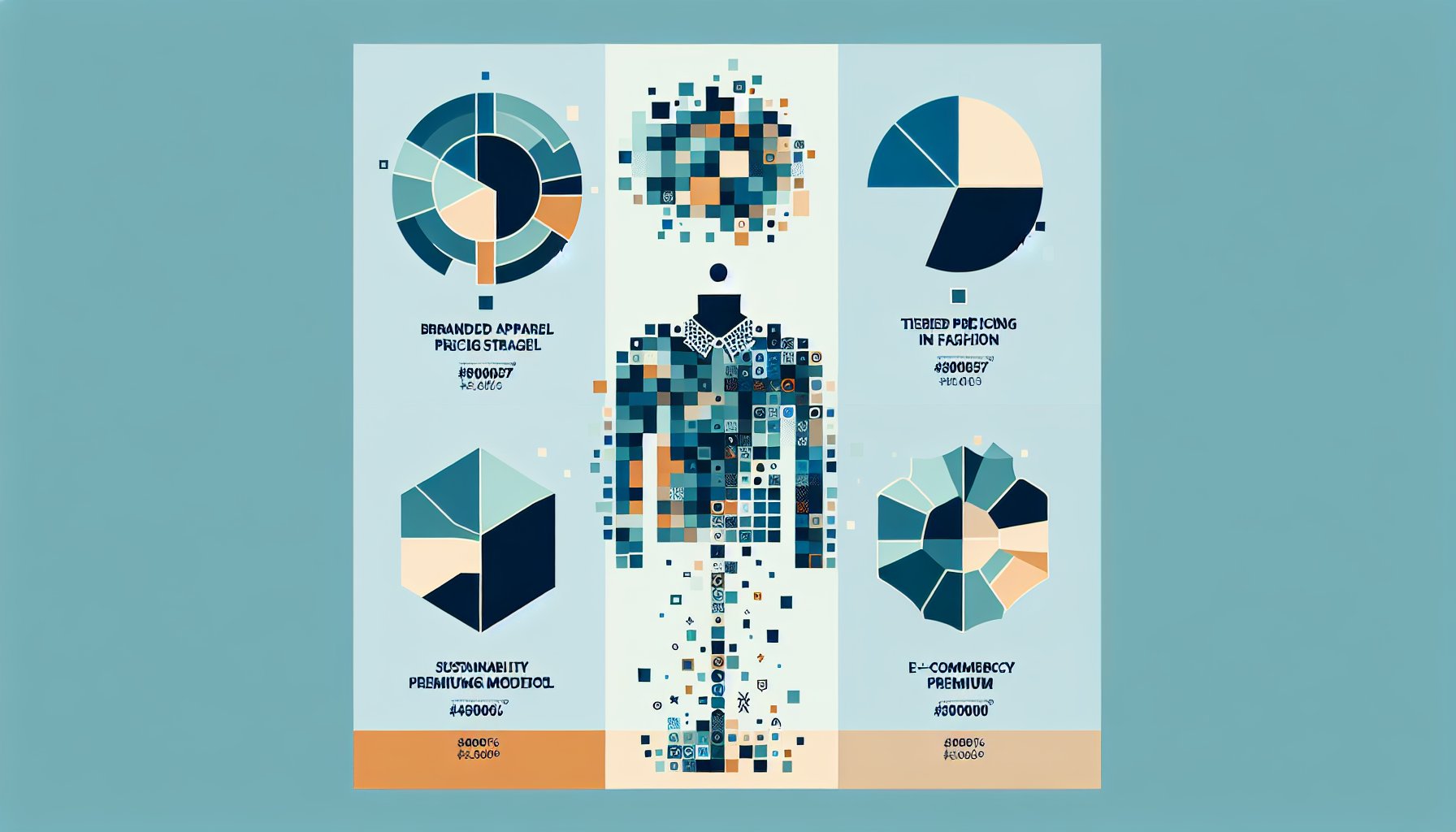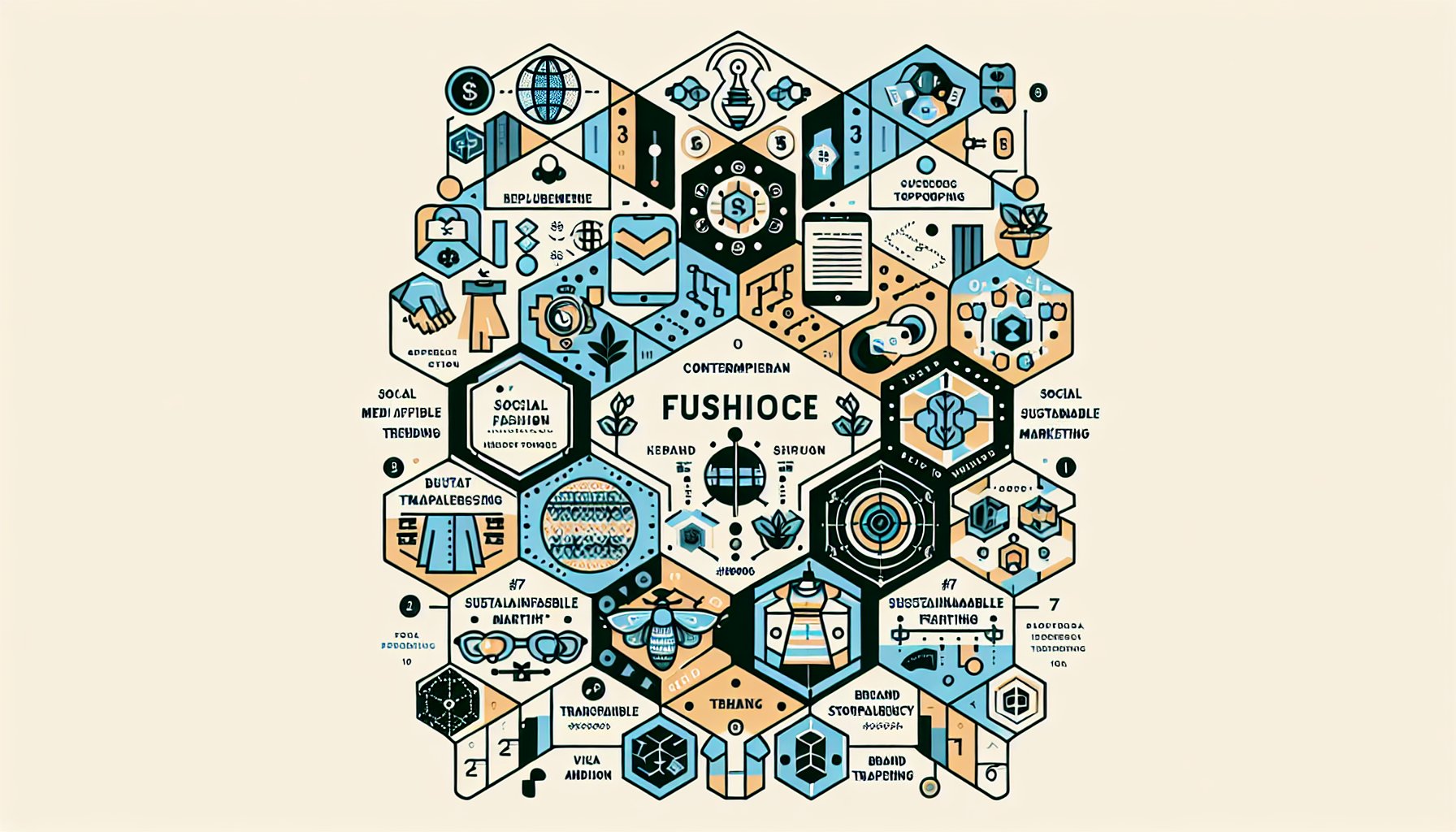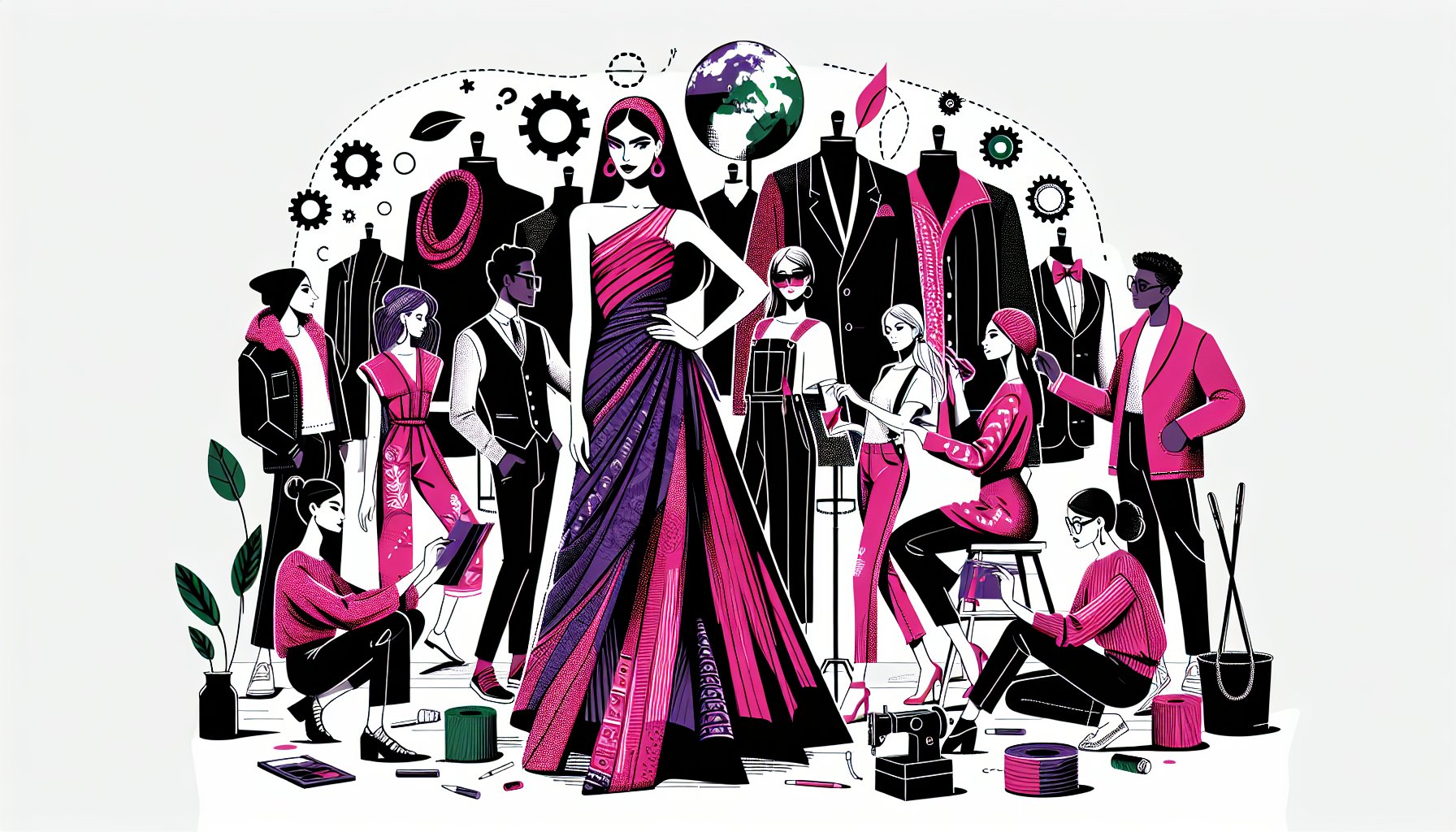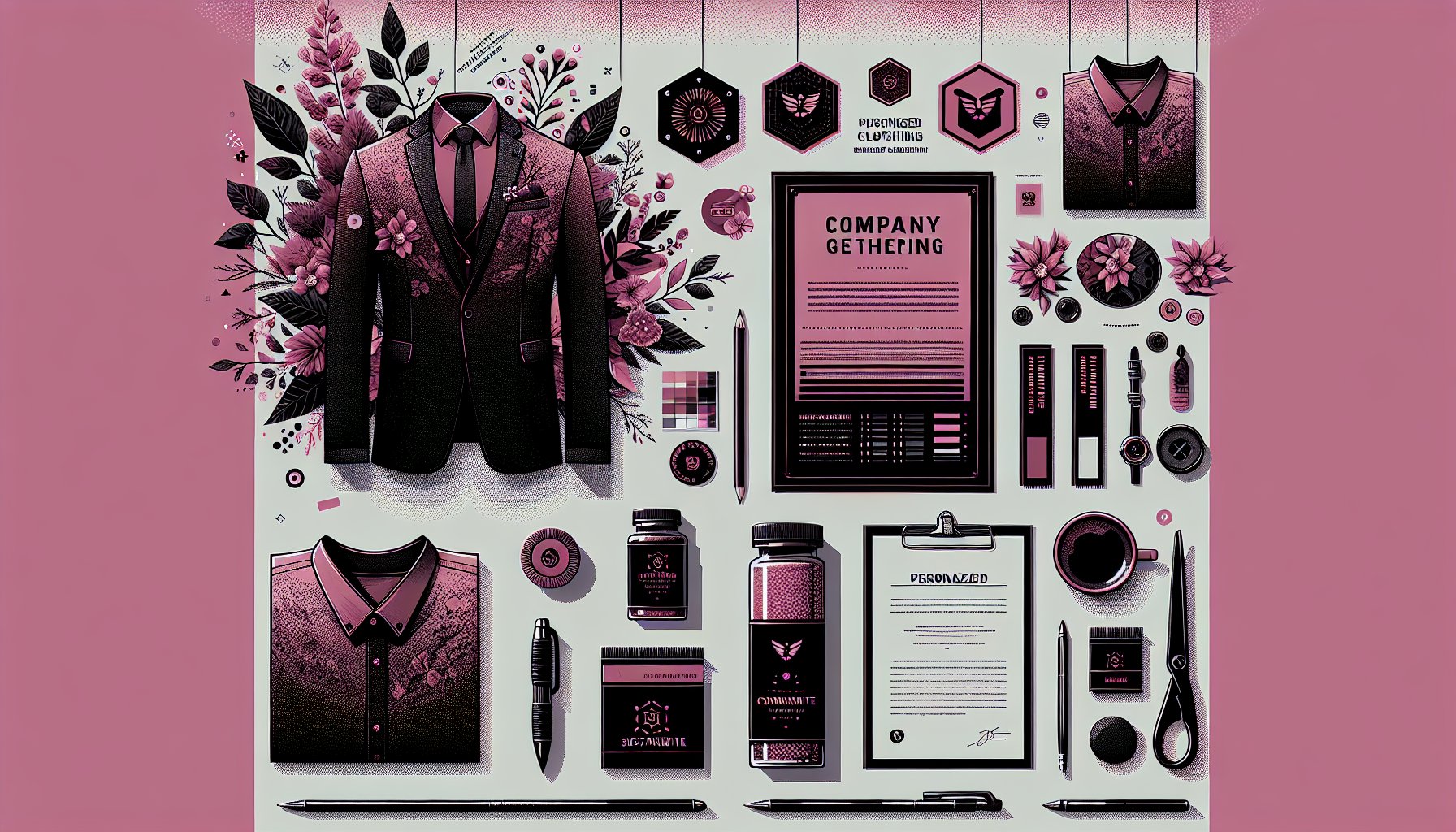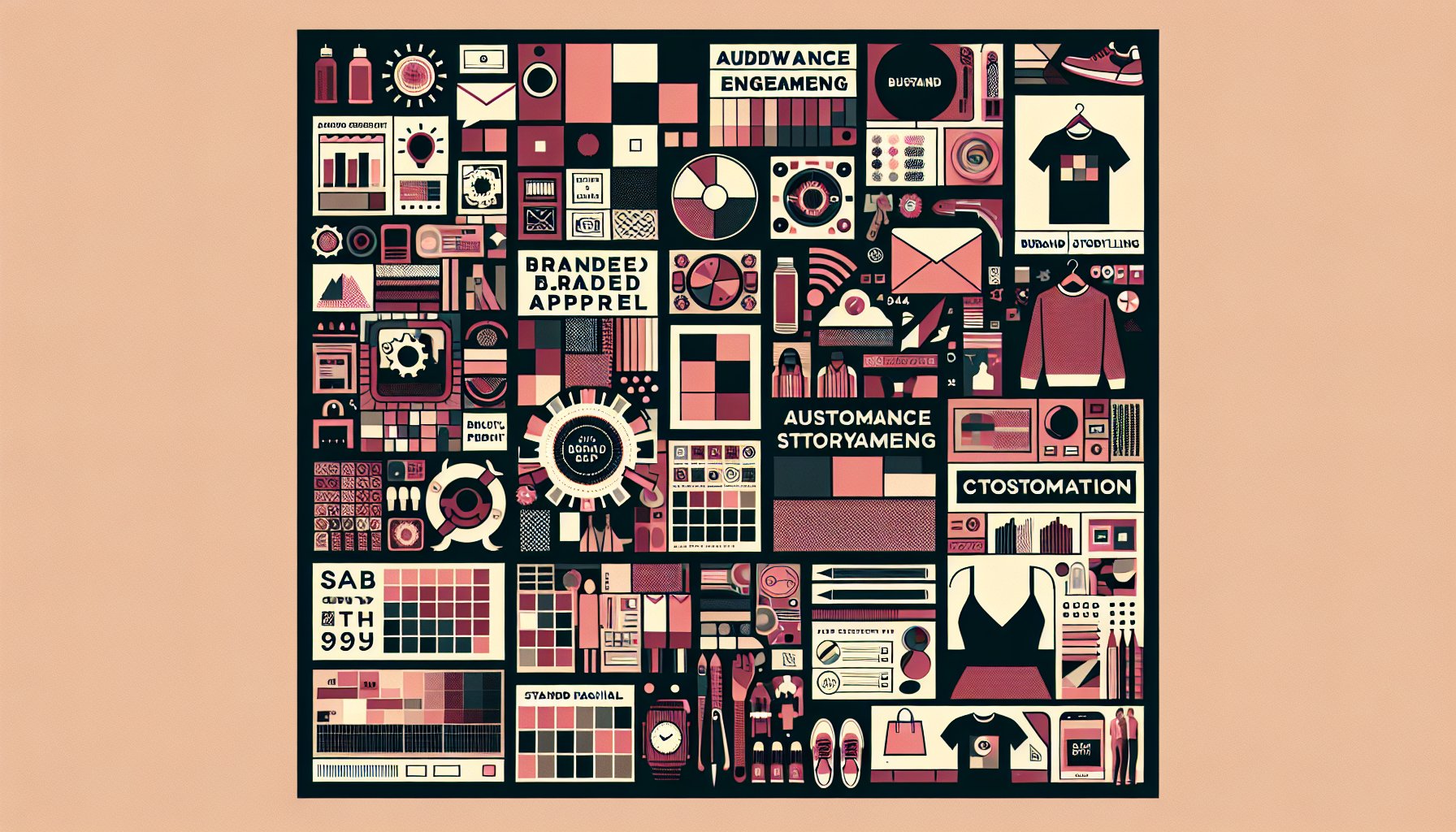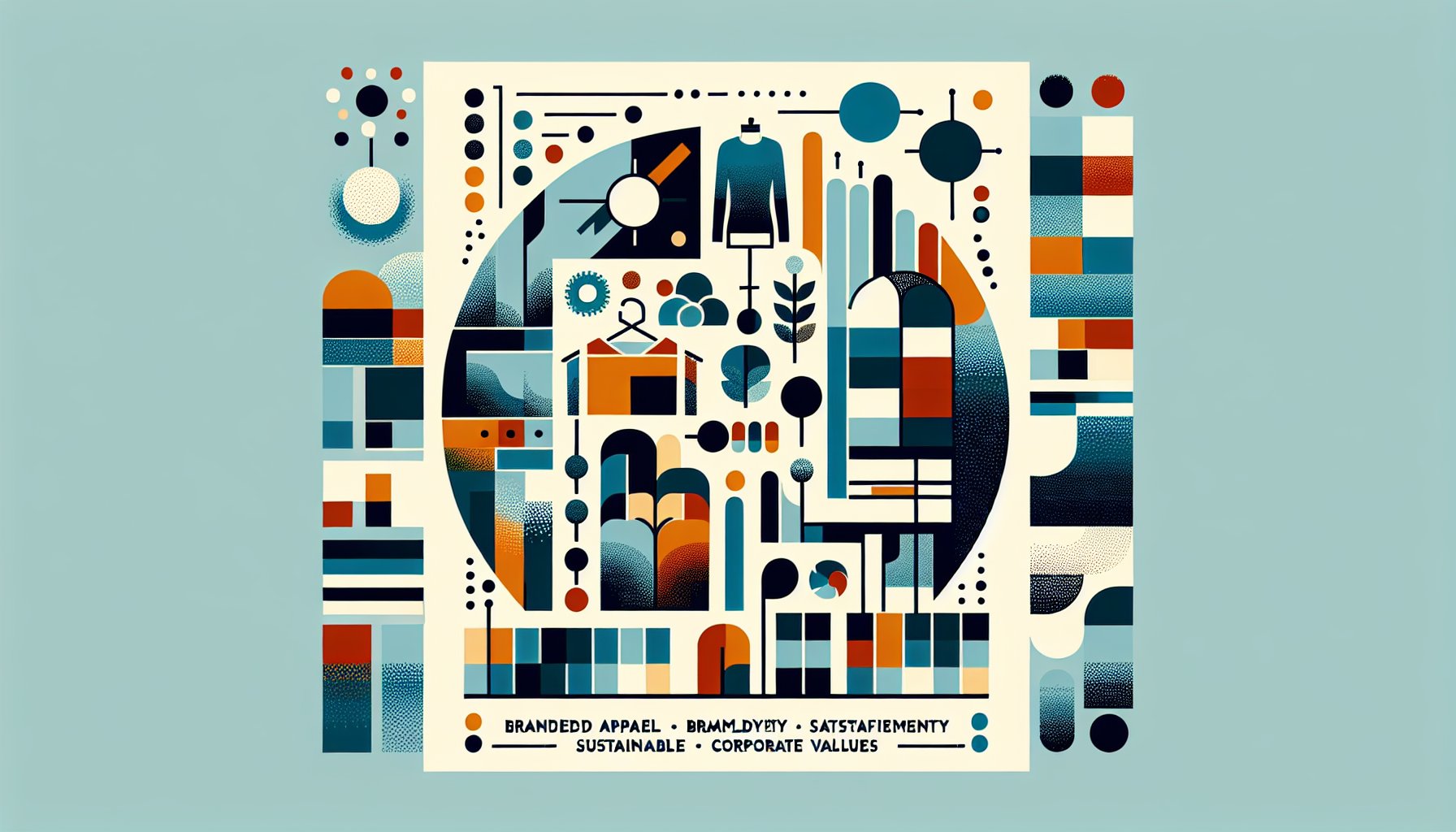Branded Apparel
A Step-by-Step Guide to Designing Custom Branded Apparel
Unlock the secrets to creating impactful custom branded apparel with our step-by-step guide. From defining your brand identity to selecting fabrics and marketing, discover how to make your apparel a powerful storytelling tool for your organization.
Sep 28, 2025
13 min read
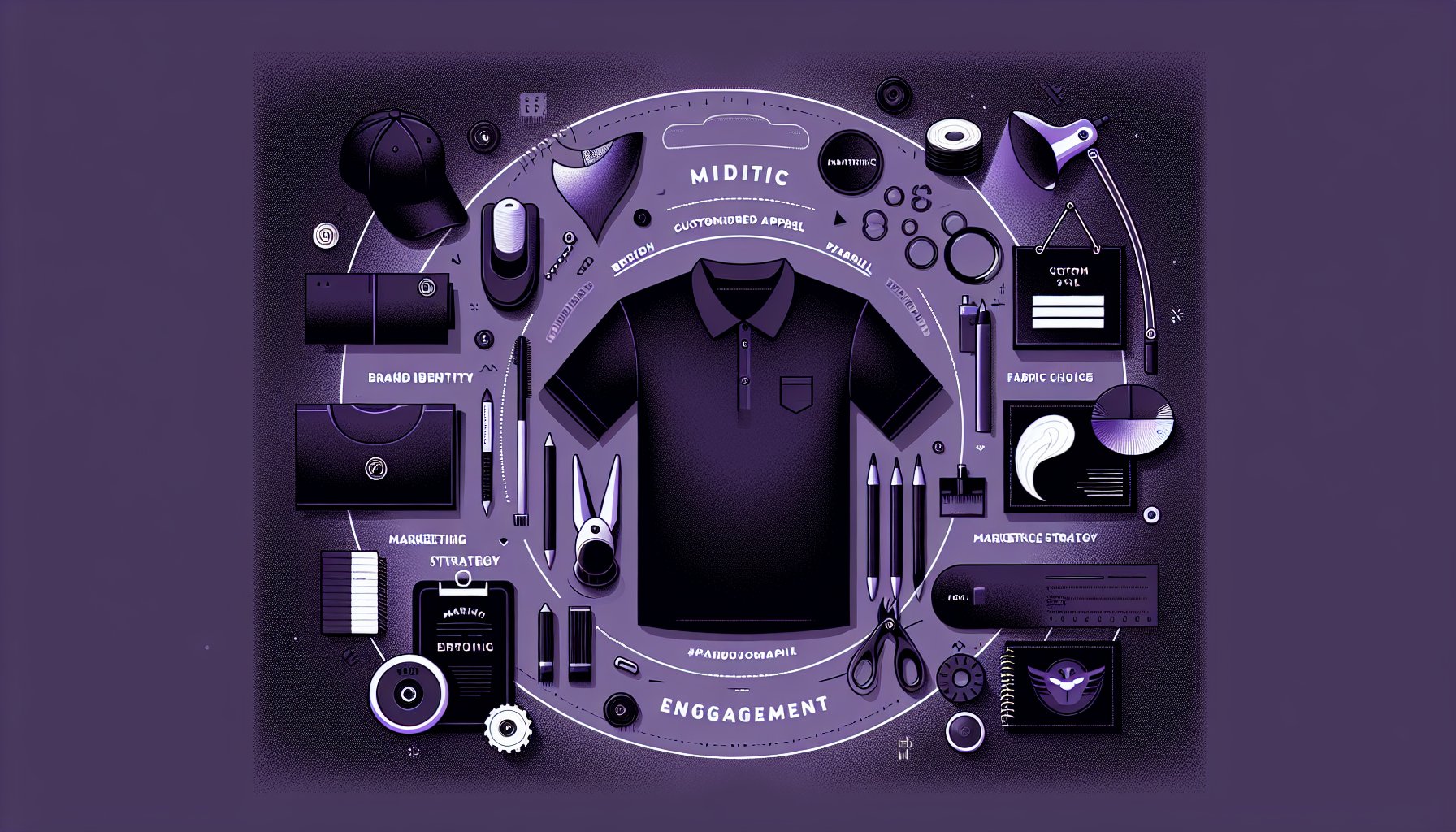
A Step-by-Step Guide to Designing Custom Branded Apparel for Proforma Color Press
1. Threads of Identity
Custom branded apparel isn't just fabric stitched together. It's a canvas for telling stories, expressing identity, and creating connections. At Proforma Color Press, we see apparel as more than attire; it's a vivid testament to what organizations represent. From T-shirts and hoodies to caps, these garments encapsulate core values, mission, and camaraderie. Picture a corporate retreat where every attendee wears a uniquely designed shirt, not just displaying the company logo but also embodying a shared future vision. This unity transforms a gathering into a memorable experience.
Think about a charity run or family reunion, where custom T-shirts capture the event's essence. A bright, cheerful shirt emblazoned with the event's name and date evokes nostalgia long after the festivities. Wearing these shirts creates an unspoken bond among participants, connecting them through shared experiences and goals. The shirt becomes a badge of honor, inviting conversations and connections that might not have happened otherwise.
Designing these garments, however, isn't trivial; it requires thought and purpose. Before embarking on this creative journey, ask, "What is our purpose?" This question guides design choices, from color schemes to messages that resonate with your audience. An organization focused on environmental conservation might choose earthy tones and sustainable materials, while a tech startup might opt for sleek, modern designs.
The fabric choice can significantly influence the garment's impact. Comfort and casualness might be priorities, or perhaps durability and professionalism are more critical. Selecting quality materials ensures the designs not only look good but feel good, leaving the wearer eager to showcase them. Every detail matters, resulting in apparel that's visually appealing and functionally unifying a community or promoting a brand.
And let's talk numbers, pricing. Bulk orders offer strategic advantages, maximizing investment through careful planning. Collaborate closely with suppliers like Proforma Color Press to find the best options that suit both budget and creative aspirations. By mastering these elements, custom branded apparel becomes a vehicle for identity, values, and friendships stitched into every fiber.
2. Weaving Your Vision: Defining Brand Personality
Creating custom branded apparel isn't just slapping a logo on a T-shirt; it's weaving a narrative that resonates and embodies your brand's identity. The first step in this intricate design process is defining your brand personality, informing every decision you make. It's akin to the soul of your brand, translating values, mission, and vision into a visual language through clothing.
Suppose you're crafting apparel for an environmental nonprofit. The brand might lean towards being eco-conscious, community-oriented, and uplifting. You'd choose earthy colors and sustainable materials aligning with the mission. In contrast, a tech startup might use sleek, modern colors and cutting-edge materials reflecting innovation.
The challenge is distilling these abstract qualities into tangible design elements. Think of the psychological impact of color, red for passion, pastels for calm. Each choice, from color to font to imagery, should echo the personality traits you want to project.
Moreover, storytelling plays a crucial role. A brand's history, mission, and aspirations can be woven into the design, transforming fabric into a canvas of cultural expression. A family-run bakery might integrate vintage lettering and soft hues, turning apparel into a symbol of heritage.
Engage with your target audience. Conduct surveys or focus groups to understand what resonates. Their insights steer your design process, ensuring the final product reflects your brand's vision and deeply connects with the people you aim to reach. This connection fosters loyalty, belonging, and positions your apparel as a powerful tool for brand recognition.
3. Fabric Choices and Color Palettes: The Canvas of Your Brand
Fabric choices and color palettes form the foundation of your brand's identity in apparel design. Imagine a crisp white T-shirt adorned with a vibrant logo, a canvas that speaks to the eye and encapsulates your brand's essence.
Choosing the right fabric impacts the feel and longevity of your apparel, crucial for creating a lasting impression. Cotton, favored for its breathability and softness, is ideal for casual wear. For durability, consider a cotton-polyester blend, ensuring vibrant designs don't fade. If sustainability is key, organic cotton or recycled materials resonate with eco-conscious consumers, amplifying your message.
Venture into color palettes, where psychology and emotional resonance reign. Colors evoke feelings and behaviors, essential in aligning with your brand's identity. Aiming for a fierce, energetic vibe? Bold reds and blues fit. For calm, trust, and reliability, cool tones like blues and greens. Think of iconic brands: Tiffany Blue evokes luxury and exclusivity. Your custom apparel should harness this power to communicate your message.
Consider the event for which you're designing. A charity fundraiser may call for uplifting shades fostering joy and community, while corporate events might prefer muted tones for professionalism. Choices aren't just aesthetic but strategic, reinforcing your message.
Visualize elements coming together. Picture a team at a community run, clad in matching, lightweight shirts in vibrant hues. They don't just look cohesive; they embody the event's spirit, creating a unified front that draws attention. Thoughtful fabric and color selection transform simple clothing into a compelling brand representation.
Ultimately, your fabric and color choices invite deep engagement. By considering these elements, you create opportunities for connection, dialogue, and brand loyalty. Your brand's canvas is ready; let your design take shape.
4. Sketching the Blueprint: Conceptual Design Fundamentals
Creating custom branded apparel is crafting a visual narrative resonating with your audience. Sketching the blueprint for your design involves understanding conceptual design fundamentals, akin to laying a foundation.
Start with your design's purpose. What do you aim to achieve? Team spirit at a retreat? Commemorate an event? Raise awareness? Each objective demands different visuals. Corporate events favor a polished aesthetic, while charity fundraisers embrace vibrant graphics and slogans. It's about aligning your visual message with your mission.
Understand your target audience. Their preferences, values, and lifestyle influence design choices. If young, eco-conscious individuals are your audience, use sustainable fabrics and contemporary designs. A local non-profit's bright, minimalistic design resonated with millennials, leading to a sell-out success. This audience-design connection is a branding cornerstone.
Remember colors, shapes, and typography's emotional impact. Colors evoke feelings; warm reds stimulate excitement, while cool blues instill calm. Explore color theory's psychological effects. Tech brands often use blue for professionalism and reliability.
Typography is equally vital. Legible fonts must reflect your brand's personality. A whimsical event might use a fun font, while a formal function benefits from sophisticated scripts. Consider scalability; some designs work on T-shirts but struggle on fitted hoodies or caps.
Refine concepts through feedback. Share designs with peers or your target audience. Their insights are invaluable, highlighting aspects you missed.
Sketching the blueprint is where magic begins. Thoughtful consideration of purpose, audience, emotional choices, typography, and feedback lays the groundwork for design success. This initial investment ensures your product resonates deeply with wearers.
5. Sizing Up Success: Understanding Fit and Comfort
Venturing into custom branded apparel, fit and comfort are key to audience interaction with your brand. Whether T-shirts for a corporate event or hoodies for a fun run, understanding varied body types and preferences influences aesthetic appeal and apparel success.
Imagine a charity fundraiser with participants in vibrant, well-fitted T-shirts. The right fabric and fit are crucial. A lightweight cotton blend offers breathability and comfort, enhancing engagement. The right fit inspires confidence, making wearers part of something larger, fueling commitment.
Yet, selecting the appropriate fit is tricky, don't overlook body diversity. Limited sizes can alienate potential supporters. Proforma Color Press emphasizes inclusivity, offering traditional and contemporary fits, ensuring everyone finds resonance with personal style. This strengthens community and reflects a brand ethos valuing individuality.
Consider the event type and activities. Team-building events may prefer relaxed, oversized fits, while corporate gatherings might favor fitted styles for professionalism. Consider how clothing interacts with printing techniques; fitted shirts may require different graphics than relaxed fits.
Create apparel that looks and feels good. Success hinges on marrying design with comfort. Understand your audience, embrace diverse sizes and fits, and select comfortable materials. This approach enhances visual identity and fosters genuine connections, transforming garments into powerful, wearable stories.
6. Stitching the Story: Integrating Branding Elements
Custom branded apparel transcends aesthetics; it's a storytelling endeavor. Integrating branding elements thoughtfully, approach design as storytelling. What message do you wish to convey?
Delve into brand essence. For eco-friendly companies, sustainable materials and earthy tones reflect environmental commitment. A local coffee shop celebrating community might feature local landmarks or playful slogans, turning apparel into conversation starters.
Think beyond logos. While logos bolster recognition, the interplay of color, typography, and imagery creates cohesion. A tech start-up might use minimalist graphics and a modern typeface, aligning with innovation. Colors should evoke emotions, blue for trust or red for excitement.
Understand your audience. Corporate events may need sophisticated designs, while family-oriented charity runs embrace bright, whimsical graphics. Engaging your audience ensures apparel resonates, transforming it from uniform to badge of honor.
When presenting finished products, share the story. Consider including the narrative behind the apparel. This turns clothing into a vessel for connection and meaning, fostering deeper brand relationships.
Integrating branding elements means crafting a story told with every stitch, color, and graphic. It fosters engagement, unity, and leaves a mark. Successful design attracts attention, fosters loyalty, and creates community, one shirt at a time. Custom apparel becomes a brand's voice, echoing long after the last thread is sewn.
7. Production Pathways: From Vision to Reality
Custom branded apparel isn't just about design; it's about navigating the production pathways that bring your vision to life. Choosing the right manufacturer can make or break your project. Start by identifying a partner aligned with your vision and values.
Understand the manufacturer's capabilities. Different printing techniques, screen printing, DTG, embroidery, affect the final look and feel. Screen printing is cost-effective for large orders with fewer colors, while DTG excels in vibrant, detailed designs for smaller runs.
Communicate your vision clearly, including fabric, design details, and colors. A charity fun run might need moisture-wicking materials for practicality. Balancing aesthetics with purpose resonates with the audience.
Consider production timelines and minimum order quantities. Bulk discounts can be advantageous, but beware of overestimating or underestimating orders. Excess inventory wastes potential, while missed opportunities hinder promotion.
Before finalizing, request samples. Assess material and printing quality firsthand. Sampling is a safeguard against errors and a chance to refine designs based on tangible outcomes.
Maintain communication with your manufacturer during production. Regular updates help navigate issues, ensuring adjustments keep the project on track. Custom manufacturing is dynamic, combining vision, clarity, and commitment to quality. It fosters loyalty and creates apparel that speaks volumes about your brand.
8. Launching the Look: Marketing the Apparel
Launching custom branded apparel is about crafting an identity that resonates. It requires a strategic approach, blending creativity and consumer understanding.
Start by understanding the apparel's core purpose. Are you fostering community, commemorating an event, or amplifying identity? This informs every marketing decision.
Consider your launch medium. Social media isn't just for images; it's storytelling. Imagine posting a video of team members in apparel during a charity run, capturing the spirit. Highlighting shared experiences creates a deeper connection with your audience.
Paid advertising plays a role. Instagram and Facebook allow targeted advertising, reaching potential customers who align with your brand. If promoting sustainability, target eco-conscious consumers. Visuals illustrate the lifestyle your apparel represents.
Influencer partnerships expand reach and lend credibility. A respected figure in your apparel can spark interest and inspire purchases. Brands often tap into niche influencers sharing values for authenticity.
Real-time interaction enhances launches. Virtual events or giveaways create excitement and community. A live Q&A on design inspiration engages customers and builds loyalty. Launching is weaving a story your audience connects with, making them stakeholders in your brand journey.
9. The Feedback Loop: Continuous Improvement
Custom branded apparel design involves a feedback loop, receiving input, refining designs, and evolving concepts. It's essential for apparel resonating with the audience and exceeding expectations.
Release a new line of T-shirts for a charity event. Gather insights from team members or focus groups. They might reveal color palettes overshadowing central messaging. Critique allows adjustments before full production, highlighting potential oversights.
Continue the feedback loop post-launch. Engage with attendees, are they wearing shirts, receiving compliments, sparking conversations? Audience engagement yields insights, perhaps a different fabric for comfort in warm months. Ongoing dialogue fosters community and shapes future decisions.
Iteration isn't just about design improvement; it evolves identity. Audience preferences and trends shift over time. Stay attuned to changes, pivoting designs to meet community wants. Success hinges on evoking belonging and identity.
Incorporate feedback culture valuing continuous improvement. Regular input makes the audience feel heard, enhancing apparel and reinforcing brand loyalty. The feedback loop is a journey of creativity, adaptability, and connection, promising fresh, relevant, and cherished custom apparel.
10. Beyond the Thread: Cultivating Brand Loyalty
Custom branded apparel isn't just about stitches; it cultivates lasting brand loyalty. Each piece, T-shirts, hoodies, caps, is a canvas for your brand identity, resonating with the audience. This narrative is woven through experiences, emotions, and memories of wearing clothing. Picture an employee in a company hoodie at a community event or a family reunion in custom T-shirts celebrating shared history. Each wear reinforces belonging, connection, and brand loyalty.
Define the garment's goal. Are you celebrating a milestone, promoting a campaign, or fostering unity? Launch a product with limited-edition apparel aligning with values, colors, and designs mirroring branding. Employees become ambassadors, sparking curiosity and conversation. Thought-out designs create emotional connections, encouraging retention and pride.
Quality reinforces loyalty. High-quality materials ensure comfort and durability, making garments wardrobe staples, symbols of allegiance. In today's world, sustainable materials resonate with conscious consumers, aligning your brand with environmental positivity.
Consider apparel's communal aspect. Events like charity runs or corporate retreats foster togetherness. Wearing the same garment transforms individuals into a cohesive unit, creating shared memories cherished long after. Community creates a ripple effect, increasing brand awareness and loyalty from new audiences.
Custom apparel transcends clothing; it's a storytelling tool. Each thread, design, and moment spent in garments contributes to a narrative binding individuals to your brand. Apparel becomes a living testament to values and experiences, fostering loyalty throughout a lifetime. Design choices and emotional connections make custom apparel a vital link between your brand and communities served.
TLDR Summary Box
- Threads of Identity: Custom apparel is a narrative canvas, creating connections and expressing core values.
- Weaving Your Vision: Define your brand personality; weave narratives into your designs.
- Fabric & Colors: Choose foundational fabrics and colors reflecting brand identity.
- Sketching Blueprint: Conceptualize designs aligned with purpose and audience.
- Fit & Comfort: Understand diverse fits for audience interaction with your brand.
- Integrating Elements: Thoughtful branding integration in apparel design.
- Production Pathways: Collaborate with manufacturers for quality production.
- Launching the Look: Strategic marketing aligns with brand narrative.
- Feedback Loop: Continuous improvement through audience feedback.
- Beyond the Thread: Apparel fosters long-term brand loyalty through storytelling.
Need Help?
Check out these related products that can help:

